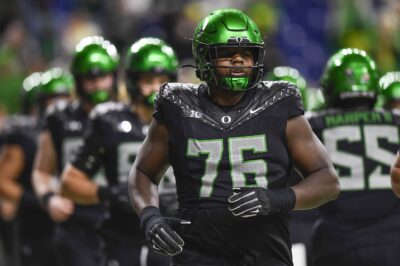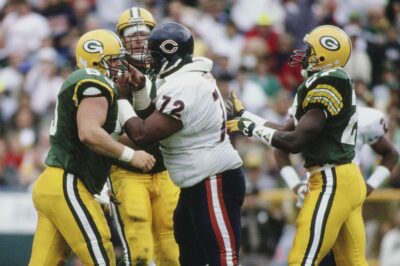The McLaren F1 Supercar: Everything You Need to Know About Gordon Murray’s Masterpiece
The three-seater’s uncompromising design and unreal performance put the automotive world on notice when it made its debut in 1992.
Bradley IgerWriterMotorTrend StaffPhotographerManufacturerPhotographerAlan MuirIllustrator

The 1988 Italian Grand Prix turned out to be a bit of a kick in the pants moment for the development of what would become arguably the most important car in McLaren’s illustrious history. Due in no small part to repeatedly dominant performances by legendary driver Ayrton Senna (and teammate Alain Prost), the team had been on the podium in all 11 races of the Formula 1 season up to that point, with Senna scoring the win in seven of them. But a collision with Williams’ Jean-Louis Schlesser during the final moments of the race would knock the Brazilian out of contention, putting a damper on an otherwise brilliant season.
Despite the disappointing result, McLaren’s F1 team technical director at the time, Gordon Murray, wasn’t dwelling on the team’s misfortune as he waited in the airport for a flight out of Milan afterward. Instead, he started penning the framework for a roadgoing, three-seat super sportscar that would later become the McLaren F1, a concept he’d been daydreaming about since his youth

After convincing McLaren head honcho Ron Dennis to back his dream project, Murray and the McLaren team set to work on creating the F1, the company’s first ever road-legal production car. Less than four years later, McLaren’s cost-is-no-object approach to the F1’s development yielded a machine that stunned the automotive world when it formally made its debut at The Sporting Club in Monaco on May 28, 1992, carrying a price tag of $778,000.
The McLaren F1’s capability remains formidable even by today’s stratospheric hypercar standards, and thanks to its sophisticated engineering and a steadfast focus on the fundamentals of performance, the car has become one of the most revered—and valuable—supercars ever built.

McLaren F1: The Game Changer
Despite the F1 being McLaren’s first road car effort, the mission was admirably ambitious: build the finest sports car the world had ever seen. This lofty target gave its designers the freedom to develop the car without the typical auto industry constraints and instead simply focus on making each element of its design the best it could possibly be.
Just 106 examples of the F1 were built over its nine-year production run (a figure that includes 28 track-only F1 GTR race cars), but its development helped pave the way for future McLaren road cars, including the MP4-12C, the P1, and the recently announced W1.




The McLaren F1’s Design
The F1’s design is a veritable wish list of high-performance hardware intended to make the car as capable and engaging as possible. It was the first production car to use a carbon-fiber monocoque, which made the F1’s chassis both light and rigid, while the supporting substructure was made from titanium. A double-A-arm suspension gave the F1 the cornering precision that Murray sought, while an absence of electronic nannies (including ABS) offered race-car-like control over the car’s behavior, as did its mid-engine, rear-wheel-drive setup.

Dihedral doors imbued the F1 with proper supercar style while allowing for easy ingress and egress despite its unconventional central seating position. By using a three-seater configuration and putting the driver in the center (with two passenger seats on either side slightly behind it), it improved outward visibility while bringing the driver’s weight to the center of the vehicle—much like a single-seat race car.
The McLaren F1’s low-drag body was constructed of carbon fiber to help further keep weight in check, while computer-controlled aerodynamic elements and a flat underbody helped keep things stable at the unprecedented speeds that the car could achieve.

McLaren F1 Powertrain
Although contemporary supercars like the Ferrari F40 and Porsche 959 relied on forced induction to deliver big power, Murray insisted that the F1 needed to be naturally aspirated to maximize the engine’s responsiveness and maintain reliability. After considering powerplants from Honda and Isuzu (the latter of which was testing a 3.5-liter V-12 in a Lotus chassis for a potential Formula 1 entry at the time), Murray approached BMW about creating a mill for his new supercar.
Led by M Division powertrain expert Paul Rosche, the team developed an all-aluminum 6.1-liter, 48-valve DOHC V-12 engine called the BMW S70/2. Outfitted with variable valve timing and a dry-sump oiling system, the new engine produced 618 horsepower and 479 lb-ft of torque, which gave the sub-2,600-pound F1 an absolutely incredible power-to-weight ratio for its day.

To help reflect heat away from the carbon-fiber monocoque and bodywork, McLaren also lined the engine bay with gold foil, a touch that brought an added layer of shock and awe to the proceedings. Power is sent exclusively to the rear wheels by way of a Weismann-developed transverse six-speed manual gearbox with a triple-plate carbon clutch.

McLaren F1 Performance
While the F1 had jaw-dropping stats in virtually every performance metric, it’s the car’s straight-line speed that really humbled the rest of the automotive world. Early iterations of the F1 could reach 60 miles per hour from rest in a scant 3.2 seconds on its way to a gearing-limited 221-mph top speed. Lateral grip figures ventured into 1.30 g territory, while independent testing revealed a 70–0-mph stopping distance of 162 feet.
At Volkswagen’s Ehra-Lessien Test Track on March 31, 1998, race car driver Andy Wallace set a top speed of 240.1 mph with the McLaren F1, a world record for production cars at the time. While ensuing hypercars such as the Bugatti Chiron Super Sport and Koenigsegg Agera RS have gone faster in the years since, more than two and a half decades later, the F1 still holds the title as the fastest naturally aspirated production car ever built.

McLaren F1 LM Variant Celebrated Le Mans Success
The McLaren F1 LM is a series of five roadgoing F1s that were constructed to celebrate McLaren’s win at the 1995 24 Hours of Le Mans. These examples differ from the standard F1 because of their increased focus on track prowess. The F1 LM is roughly 167 pounds lighter than the standard car due to its stripped-out interior and lack of sound-deadening material, while more aggressive aerodynamics, specially designed 18-inch magnesium wheels, and an upgraded gearbox are matched up with a revised version of the BMW V-12 that dished out 671 horsepower and 520 lb-ft of torque. All five McLaren F1 LMs were painted Papaya Orange as a tribute to Bruce McLaren and his race cars, which wore the same hue.

McLaren F1 GT Is the Rarest F1
Built to satisfy FIA homologation requirements for the McLaren F1 GTR “Longtail” race car during the 1997 GT racing season, the rarest iteration of the F1 is the F1 GT. Three were built in total—two production examples and one prototype. Along with its eye-catching roof scoop, this roadgoing homologation special feature flared-out bodywork that’s similar to the F1 GTR race car but lacks the LM’s large rear wing.

The McLaren F1’s Cultural Impact
Over the years, the McLaren F1 has been featured in numerous video game franchises, including Need for Speed, Gran Turismo, and Forza Motorsport. Although it hasn’t been featured as prominently on the silver screen (a circumstance that we’d speculate is related to its value), automotive shows like Top Gear and Fifth Gear have done a variety of segments on the F1 over the years.
Celebrities ranging from Elon Musk to Rowan Atkinson have owned McLaren F1s, the latter gaining a level of infamy for crashing his. Don’t worry, though—the car was rebuilt, and Mr. Bean even managed to turn a profit on it.

McLaren F1 Value and Collectability
Although its production ultimately fell far short of the 300 examples that McLaren had planned, the F1 is widely considered one of the greatest supercars of all time. And due to its world-beating capability, driver-focused design, and extreme rarity, it’s also one of the most valuable supercars of all time. Auction prices have reached $20 million in recent years, and considering its place in automotive history, the McLaren F1 is likely to only become more sought-after as time goes on.

McLaren F1 Highlights
- The F1 was designed by motorsport luminary Gordon Murray, who was McLaren’s technical director at the time.
- Murray envisioned the McLaren F1 as a roadgoing, three-seat super sportscar.
- The F1 made its formal debut on May 28, 1992, carrying a price tag of $778,000. It was McLaren’s first vehicle certified for use on public roads.·106 examples of the F1 were built over its nine-year production run.
- Its development helped pave the way for the McLaren road cars like the MP4-12C, the P1, and the recently announced W1.
- The F1 was the first production car to use a carbon-fiber monocoque chassis.
- By using a three-seat configuration and putting the driver in the center, it improved outward visibility while bringing the driver’s weight to the center of the vehicle, much like a single-seater race car.
- Led by BMW M Division powertrain expert Paul Rosche, the team developed an all-aluminum 6.1-liter naturally aspirated 48-valve DOHC V-12 engine called the BMW S70/2 for the McLaren F1. Outfitted with variable valve timing and a dry-sump oiling system, the new engine produced 618 horsepower and 479 lb-ft of torque.
- Early iterations of the McLaren F1 could reach 60 miles per hour from rest in 3.2 seconds on its way to a gearing-limited 221-mph top speed.
- Lateral grip figures also ventured into 1.30 g territory, while independent testing revealed a 70–0-mph stopping distance of 162 feet.
- At Volkswagen’s Ehra-Lessien Test Track on March 31, 1998, race car driver Andy Wallace set a top speed of 240.1 mph with the McLaren F1, a world record for production cars at the time.
- Built to satisfy FIA homologation requirements for the McLaren F1 GTR “Longtail” race car during the 1997 GT racing season, the rarest iteration of the F1 is the F1 GT. Three were built in total—two production examples and one prototype.
- Over the years, the McLaren F1 has been featured in numerous video game franchises, including Need for Speed, Gran Turismo, and Forza Motorsport.
- Due to its world-beating capability, driver-focused design, and extreme rarity, the McLaren F1 is one of the most valuable supercars of all time. Auction prices have reached $20 million in recent years.
News
Pretty city where you can buy three-bed homes for less than £35,000 – and there’s no catch
PROSPECTIVE homebuyers will be shocked to learn that there remains an area in Britain where three-bed homes go for over…
College Football Playoff Quarterfinal Open Thread
College Football Playoff Quarterfinal Open Thread Talk about the New Year’s Day Bowl games here! Happy New Year everyone! The…
The Bear’s Den, January 2, 2025
The Bear’s Den, January 2, 2025 Welcome to the first “regular day” of 2025 here in the Den! WE WANT…
NFL Toxic Differential Plus Through Week 17
Tracking team health throughout the entire NFL by tracking the big plays! Welcome to Week 17 of Toxic Differential Plus. Click…
MotorTrend Car, Truck, and SUV Rankings: Here Are the Biggest Losers of 2024
When MotorTrend compares cars, we’re sometimes impressed by how good cars are today, even the ones that finish closer to last. And…
2024 Subaru Crosstrek Wilderness Yearlong Review Verdict: Tough to Beat
12 months behind the wheel show the Crosstrek to be one of the best subcompact SUVs around. When we started…
End of content
No more pages to load













Leave a Reply